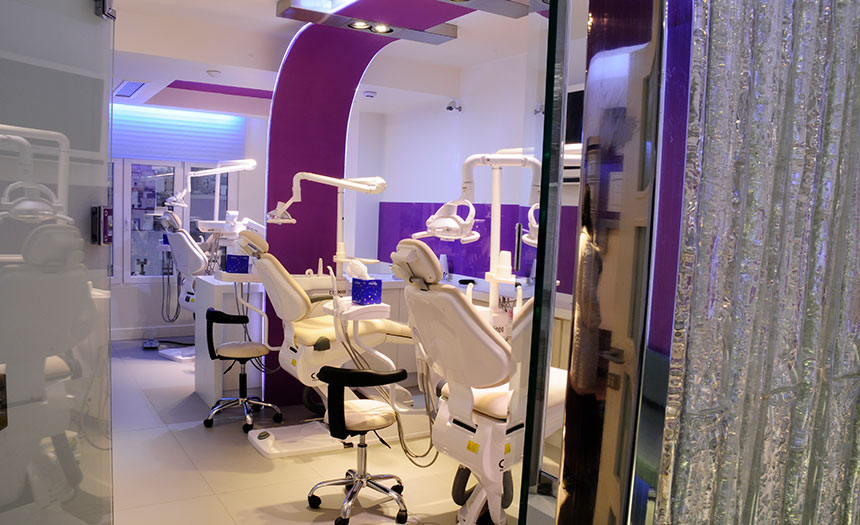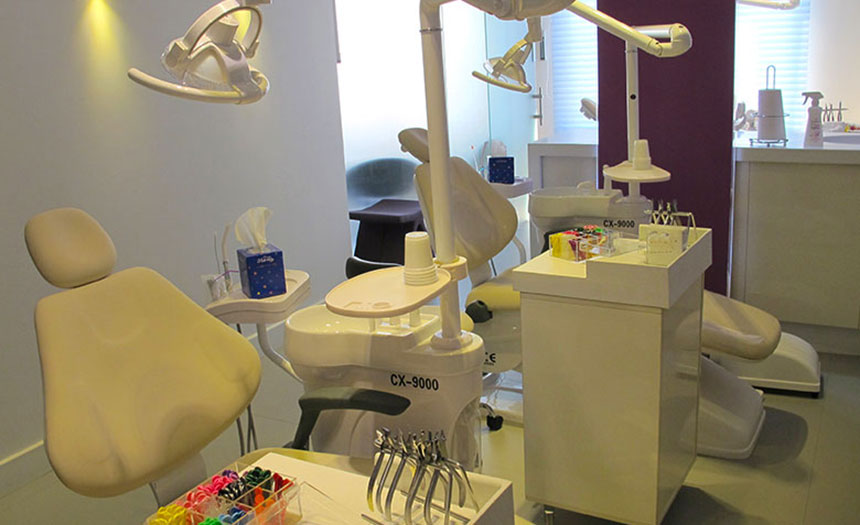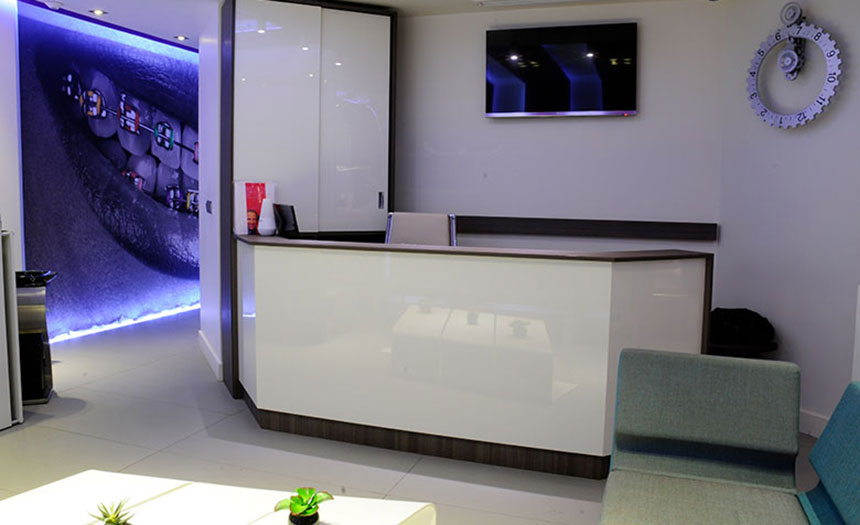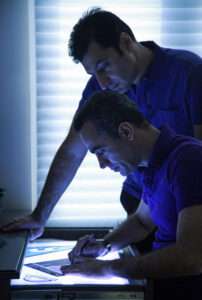By: Trends Editorial Team
Thank you so much for giving Trends this exclusive interview. Please tell us about yourself and your background.
From an early age I have been interested in technical work where I could fix things. And this was true even as academically too I was doing quite well. So, for instance, during my secondary school years at Alborz High School in Tehran from which I graduated with a major in experimental sciences, I also held a part time job at a local mechanic shop repairing car oil pumps. In fact, I got so good and so fast at my job that they paid me a meager salary.
Then, after graduating from high school and finishing my 2-year military draft, I took the national entrance exam for University of Tehran where I ranked 207th and started dentistry School. During those years at the university, I also had a small shop in the Tehran Bazaar, but even so, I was able to finish my degree with a first-place ranking. Right after that I had to take another entrance exam for my area of specialty as an orthodontist. I got the highest rank in the entrance examination for specialty fields in all universities of Iran, and I was also admitted with the top ranking in the field of orthodontics at the University of Tehran. In my third year of specialty degree, I made a three-month trip to the United States, where I passed the U.S. National Dental Board part I and part II examinations and received a certification as an orthodontist.

After finishing my specialty degree and passing the orthodontist board exam in 2004 in Iran, I became a faculty member of Rafsanjan University for two years after which I started my medical career in Tehran. In 2008, I passed the Medical Activity License Exam in UAE and began my part-time dental practice in Dubai, which I still continue. In 2010, I went to Canada and got my residency after a few years. Later I got my Canadian citizenship, and also passed three stages of Canadian dental exams, but I preferred to continue my career in Iran and the UAE. So, I returned home and started working with Invisalign Company through my Dubai practice in 2013 and this collaboration continues to date.
Please tell us about the work done at your dental office. What are some of the special dental treatments that you offer?
Our focus in the dental office is on orthodontic treatments, which include a variety of removable orthodontics treatments in early childhood and teenage years, as well as fixed orthodontics in teenagers and adults. Also, combined orthodontic and jaw surgery treatments (orthognathic) which are performed to correct severe dental-jaw abnormalities, are an important part of our practice.
The US Invisalign system is another major area of our activities, and we perform even complex orthognathic treatments with this system based on the patient needs. We often hear that clear aligner are not as effective as complex treatments. Although, each treatment system has its own limitations, a large percentage of orthodontic problems can be treated with clear aligners especially when the doctor is sufficiently trained and skilled and the patient cooperates. We have now added cosmetic treatments as well as dental implants to our treatment services.

Why did you decide on orthodontics after dental school? Why not dentistry or dental hygiene, or another dental field?
My main motivation in choosing orthodontics was to make a big and significantly positive change on the face and smile of people with severe dental and jaw disorders, and to have an effective role in improving their quality of life. I believed orthodontics could do that and now, after about twenty years of experience, this has been proven to me. Many times, I’ve heard from my patients that before the treatment they didn’t laugh, but after going through the orthodontic regimen, they smile easily. Hearing this is the greatest pleasure for me because this positive change can be really effective in increasing our patients’ self-confidence in achieving more success, as in better jobs, better marriages and better social relationships.
What is Invisalign? How does Invisalign work?
Invisalign is a new orthodontic procedure that uses clear aligners to straight the teeth, in a way that the stages between the misaligned position of the teeth (primary) and the straight and ideal position of the teeth (final) are designed by computer software (in twenty stages, for instance). At each stage the teeth are slightly more straightened than the previous stage, so that when we gradually get from stage one to stage twenty, the teeth are perfectly straight. A separate aligner is made of special and clear plastic for each stage. The patient starts from stage one and uses each aligner for about two weeks and then uses the next aligner, each aligner moving the teeth slightly until they reach the final stage, where the teeth are perfectly straightened.
What types of orthodontic cases can Invisalign treat? Is Invisalign treatment painful?
More than 90% of orthodontic problems can be treated with Invisalign, if it is done by a skilled and experienced orthodontist trained in the Invisalign method. The orthodontist usually adds equipment to this system and uses them in addition to the aligners. Patient cooperation in the use of aligners is also very important as they have to use them for 22 hours each day. In some cases, Invisalign and other methods can be used in combination.
As for pain it should be said that the Invisalign method is more comfortable and painless than the usual method of wire and braces, because the pressures are applied to the teeth in a much more regulated way and with a more calculated method. Also, the sharpness of the wires and braces are removed and the lips and cheeks are not injured and irritated as in the wire and braces system of straightening teeth.
Can both adults and kids use Invisalign? How long does Invisalign take to straighten teeth?
Yes, both children and adults can use this method. This method is especially useful in adults because it is almost completely invisible, and the aligners are not seen on the teeth and don’t interfere with normal oral functions such as speech. At mealtimes, the patient removes the aligners from his or her mouth and puts them in a special box, eating comfortably as usual. Then the patient will need to floss and brush his or her teeth, and put the aligners back on their teeth.
In children, even when all the permanent teeth have not yet grown, Invisalign can be used in such a way that the space required for the growth of permanent teeth is maintained by the aligner so that each tooth grows in its own proper space.
The duration of treatment is also different in each method as I have repeatedly observed that if the patient uses aligners full time, the speed of teeth movement will be faster than with the wire and braces method and as a result the treatment period will be shorter.
Is Invisalign better than traditional braces? Is it possible to switch from braces to Invisalign in mid treatment?
Invisalign method has many advantages over wire and braces method, the most important being their invisibility. Another advantage is the removal of aligners while eating as normal, so that any food can be eaten without worrying about detachment or damage to orthodontic appliances. In addition, oral hygiene, brushing and flossing are done as usual because there is no wire and braces, and as a result the teeth are cleaned better and easier, the risk of tooth decay is reduced and also gingivitis, which is common in wire and braces, significantly reduced in this method.
The irritation of the lips and cheeks and their injury also cease due to the lack of sharpness of braces and wires. There will also be no disturbance for normal oral functions such as speech, and in certain cases they can even be temporarily removed from the mouth if necessary.
And yes, it is always possible to switch from the wires and braces to the Invisalign method at any stage of the treatment. Obviously, in orthognathic cases, the presence of wires and braces is sometimes necessary in certain stages of treatment.

How much does Invisalign cost? Why is it more cost efficient to do it in Iran?
In most countries of the world, the cost of Invisalign is almost the same as the wire and braces method. Obviously, if the treatment is done by an orthodontist, it will cost more than a general dentist because the orthodontist is trained in the desired field.
Due to our work experience and negotiations with Invisalign, we have been able to provide this service to our patients with the best quality and by an orthodontist at a cost of almost half the usual amount. Obviously, I’m talking about the original aligners of American Invisalign Company. Many companies and laboratories have imitated this method, and there are all kinds of fake and non-original aligners that are offered under the name of Invisalign at a lower price without the quality and efficiency of the original aligners. The simplest way to identify the original ones is to pay attention to the packaging of the aligners as well as the presence of the Invisalign logo, and the patient file number and the aligner number engraved on each of the original aligners.
 In your opinion, what is the most difficult aspect of Invisalign treatment?
In your opinion, what is the most difficult aspect of Invisalign treatment?
There is no particular difficulty in Invisalign treatment except in special, complex and rare cases where it is necessary to use combination of other methods. The only difficult point in my mind is that the Invisalign treatment strongly depends on the patient’s cooperation in the use of aligners, and so if the patient does not have proper cooperation, the desired result will not be achieved.
In your opinion, what are the latest trends in Orthodontics and where is the field heading?
I think the most important process in orthodontic treatment is to make orthodontic appliances invisible as well as to reduce the disturbance of these appliances to the patient. Also, increased speed of teeth movement and consequently reduction of the duration of treatment is another process that has recently been considered by researchers of this field.
How do you stay up to date with new treatments and advancements in orthodontics?
To stay up to date, I try to attend domestic and international seminars and conventions. I also read new articles of reputable journals, and I always try to stay up to date with the latest medical advances through internet. In general, I’m not interested in passivity, and instead I’m very eager in change and diversity, and I try to take a step forward every day.



